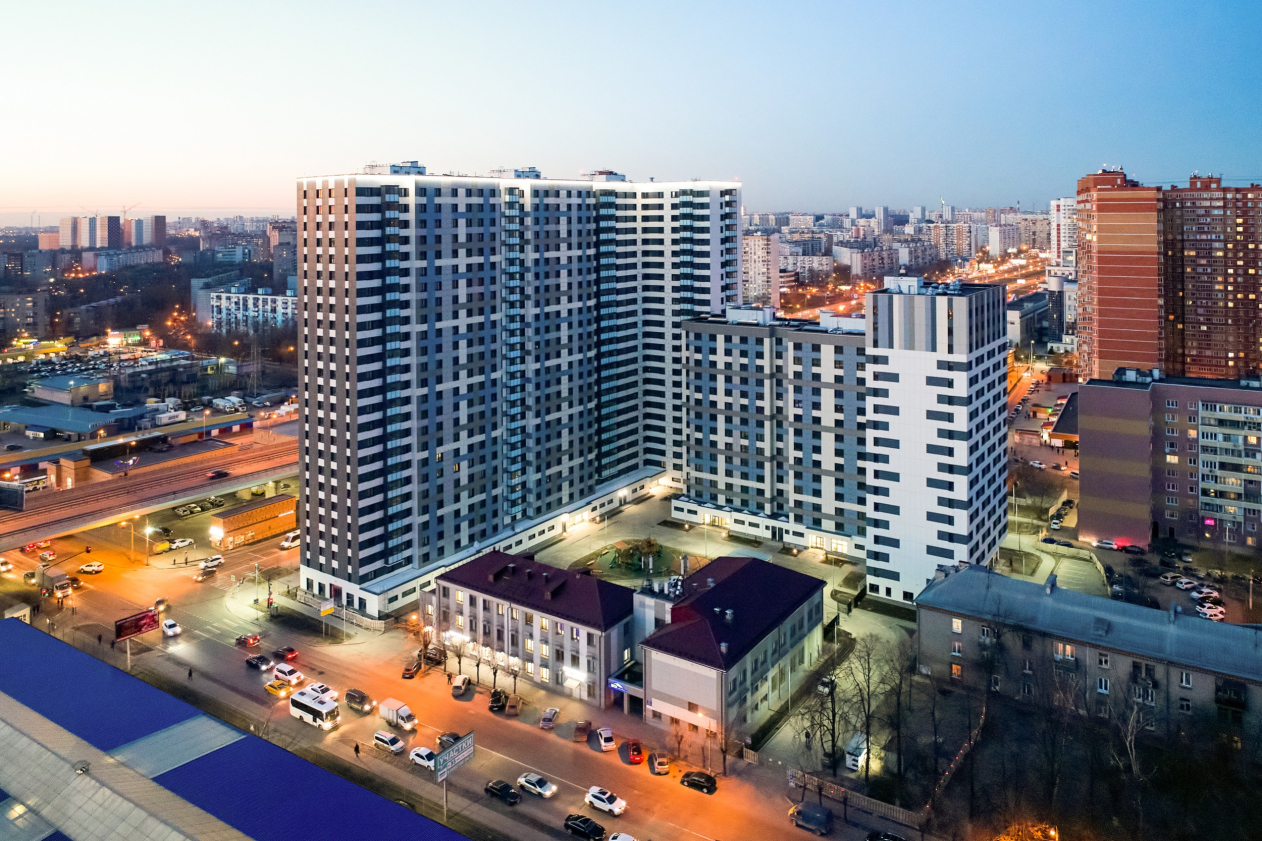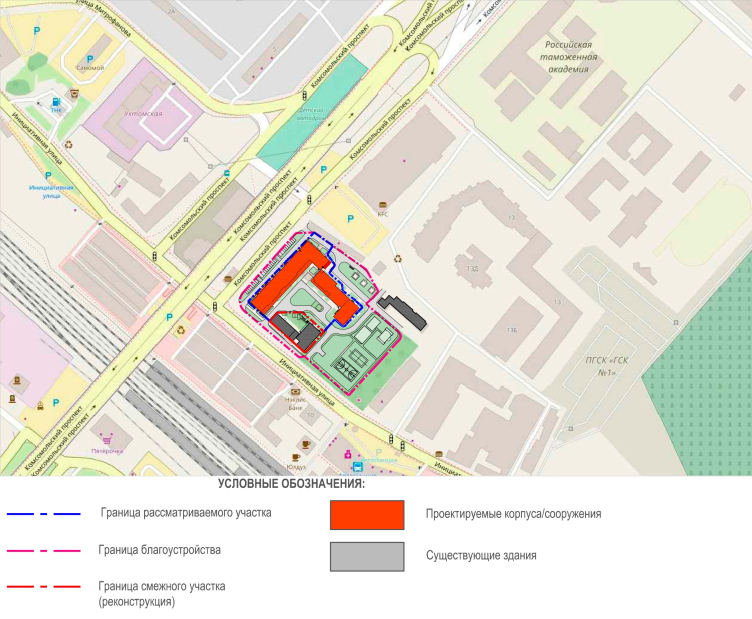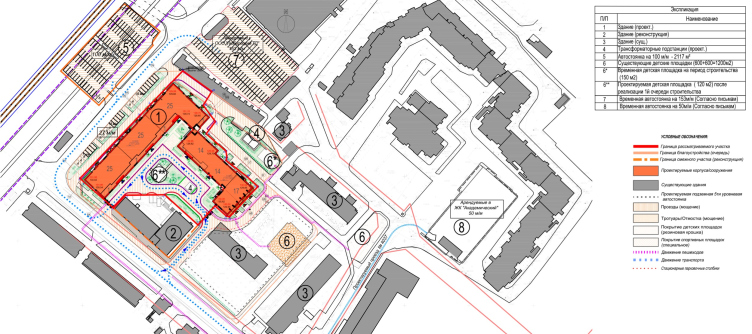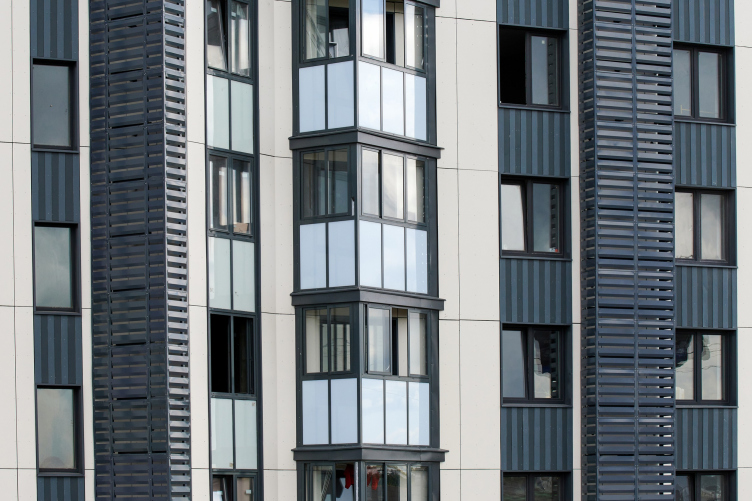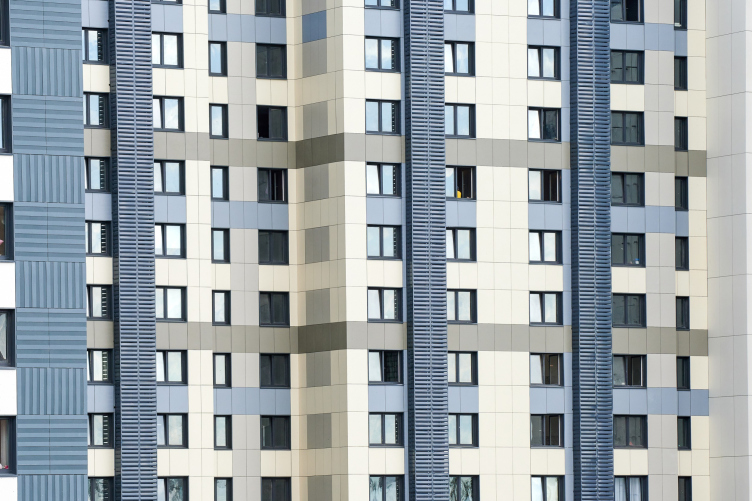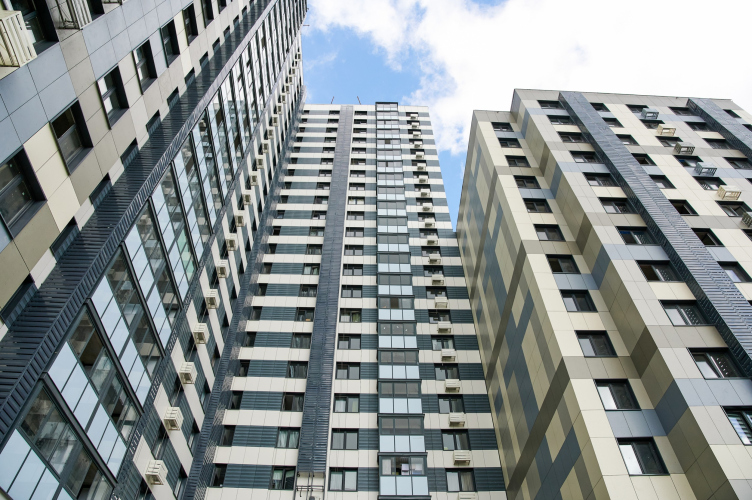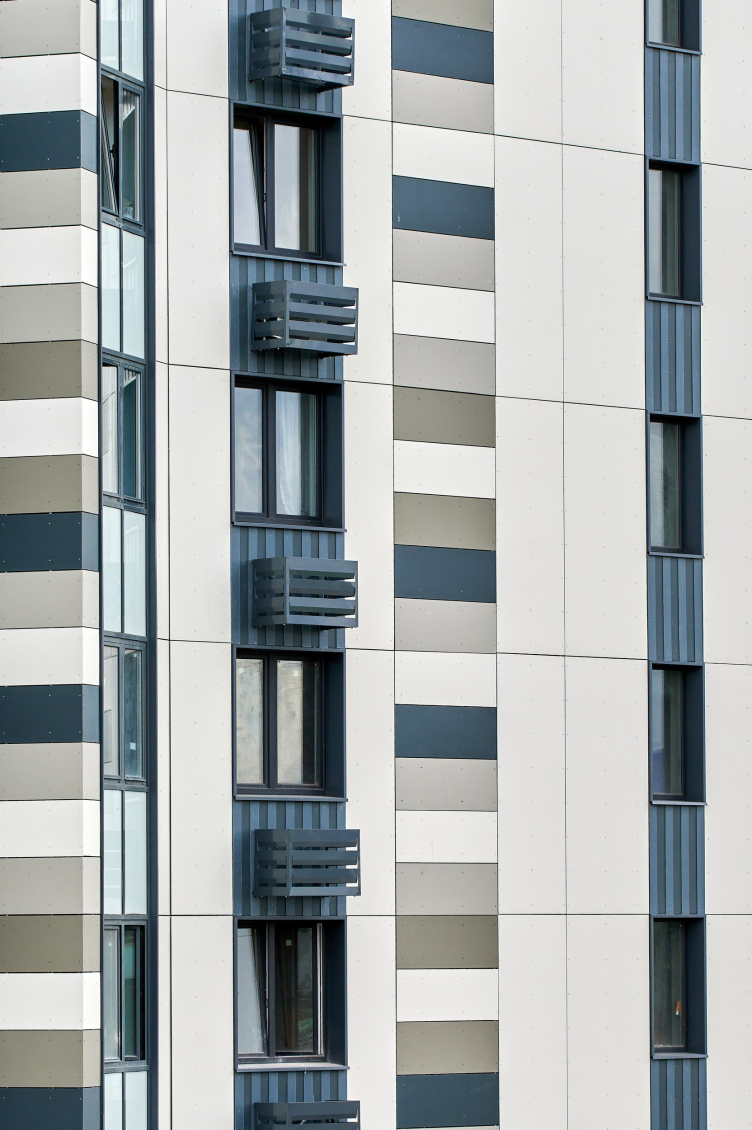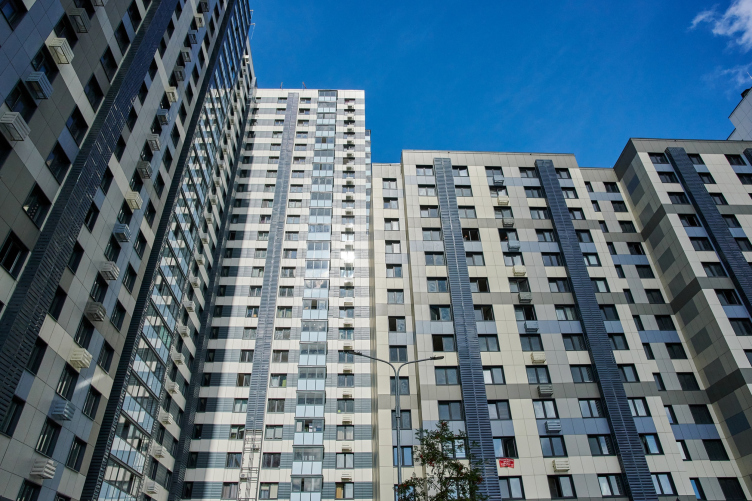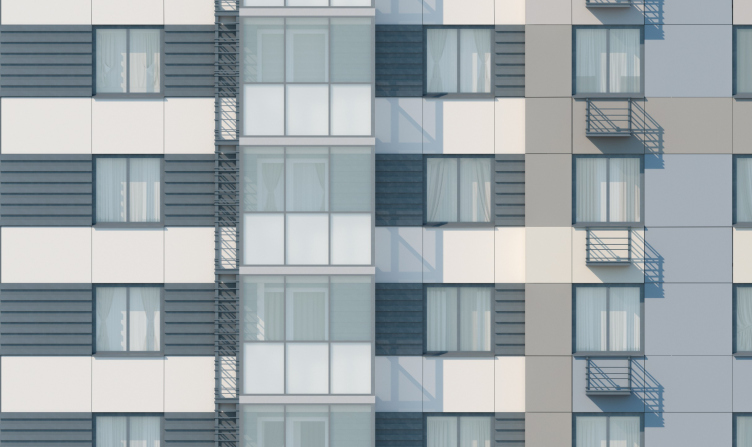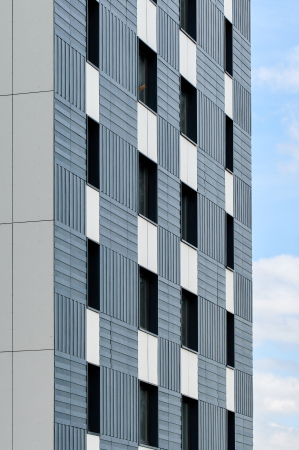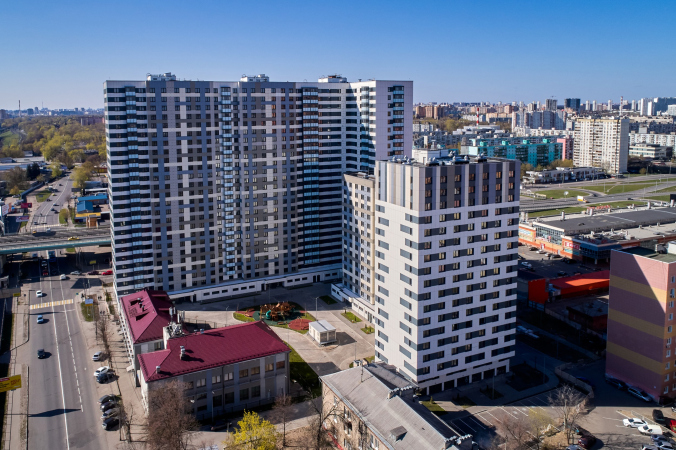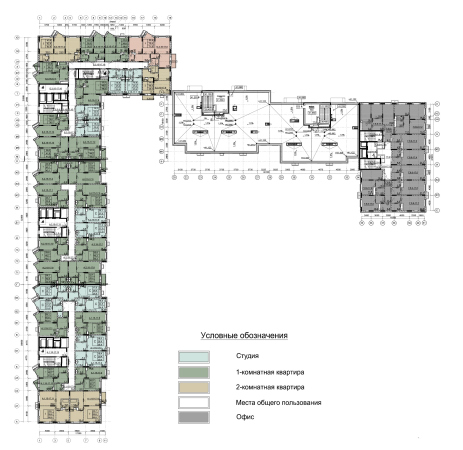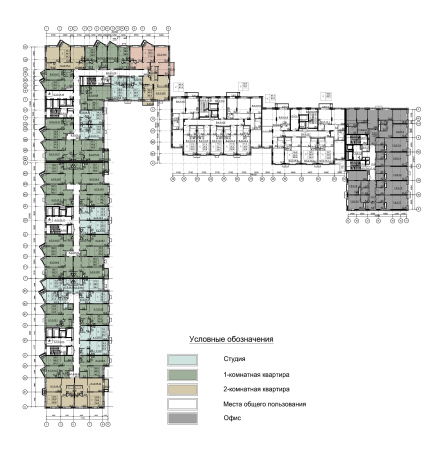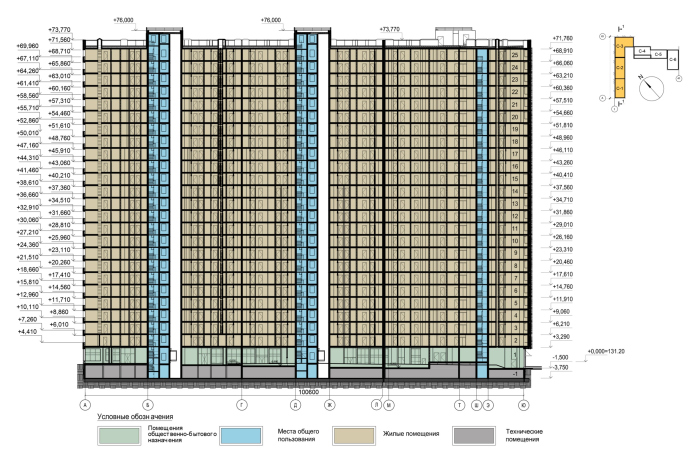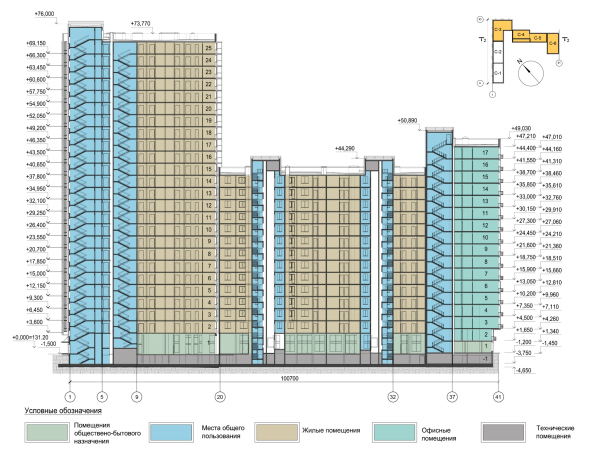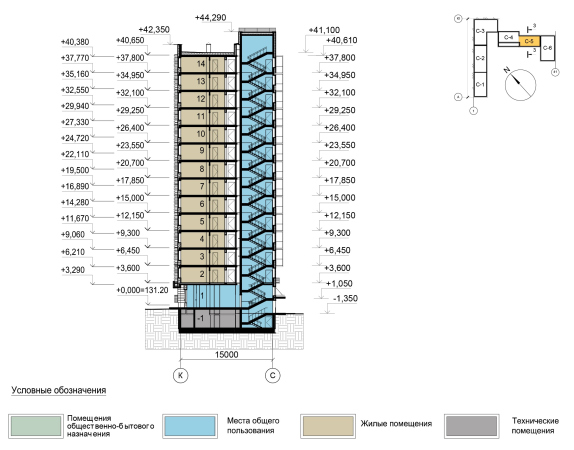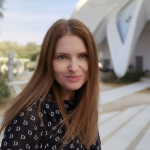“Oblaka” housing complex
Copyright: © Photo courtesy by 3-RED
The project of the complex was developed by the architectural company “Mezonproject” at the commission of 3-RED developers. This is a fairly well-known developer, whose portfolio includes such implemented projects as the residential complex “Novokraskovo”, “Vidny Bereg”, the low-rise “May”, “House on Barvikhinskaya”, and others.
The leader of Mezonproekt Ilia Mashkov shared that his company was faced with a rather difficult task: to design, on a tight schedule, a commercially attractive housing complex on a land site that had a lot of spatial constraints and was far from easy in terms of its surroundings. But then again, such a situation is rather ordinary. In some sense, the developers are expecting the Russian architects to pull a miracle. And, surprisingly, sometimes miracles do happen.
The location plan. “Oblaka” housing complex
Copyright: © Mezonproekt
The land site with an area of slightly less than 0.8 hectares occupies an angular position at the intersection of Initsiativnaya Street and Komsomolsky Prospect. Parallel to the Initsiativnaya Street, run the railroad tracks. The suburban trains rumble here from early morning till late at night. The four-lane Komsomolsky Avenue comes perpendicular to the railroad, spawning a raised road junction exactly where the new complex is situated.
The environment around the new residential compound is very diverse. There are shopping malls, sprawling left and right from “Lyubertsy-1” station, as well as brightly colored shopping pavilions and market tents. The farther away from the station, however, the cozier it becomes: the residential blocks of the late-Soviet period, 1990’s, and 2000’s, schools and kindergartens, food stores and cafés. Within a walking distance, there is the Natashinsky Park with two big ponds. The new housing complex will serve as a dividing line – a bastion that separates the center of Lyubertsy from the bustle of the railroad. At the same time, curiously, its yard is facing the station.
The site plan. “Oblaka” housing complex
Copyright: © Mezonproekt
The complex consists of two buildings, three sections in each one. The tall elongated 25-story building separates the territory from the flyover bridge. A lower volume with the number of floors varying from 14 to 18 stands in the depth of the yard, “protecting” the rear. From the side of the Initsiativnaya Street, the yard space is protected by an iron fence and two two-story structures that are preserved on the land site (during the construction, they hosted the sales office and the showroom).
“Oblaka” housing complex
Copyright: © Photo courtesy by 3-RED
Such an arrangement has to do not just with the urge to create a closed and secure yard. This way, the complex get maximum sunlight, opening up southward. The only place that experiences a lack of sunlight is the street façade of the 25-story building that gazes northwest. The problem is solved by using triangular bay windows. In addition to ensuring extra insolation inside the apartments, the bay windows also serve to increase their floor space, at the same time enriching the planning geometry. The “teeth” of the bay windows also make the façade look more expressive. Without them, the façade would have probably looked commonplace.
“Oblaka” housing complex
Copyright: © Photo courtesy by 3-RED
At the design stage, it was assumed that some of the apartments would be sold to the residents, and some would be rented out. The latter would occupy a whole section – the last one, 18 stories high. Later on, however, the function was reconsidered, and now it is an office center with an independent entrance from the street side. This dialogue between the facades – the evenly pitched grid in the residential part and the dynamic “chessboard” grid in the office section – serves as the basis of the whole architecture of the complex.
Ilia Mashkov is reminiscing that this image came together almost at once – reserved, laconic, without any excessive plastique, and with a balanced color solution in the tone of Lyubertsy skies. At the same time, both height-wise, and in terms of the accuracy of architectural solutions, the new house obviously claims the role of a centerpiece.
The construction around our land site is rather homogeneous – a lot of standard housing projects. Against such a background, our project, which reflects the spot-on architectural trends of today, logically becomes the centerpiece in terms of visual perception.
The outward appearance of the two buildings interprets the commercial name of the complex – “Clouds”. The sky is clearly read in all of its colors; the facades are turned into a semblance of a palette, using which the artist mixed up the shades of color to paint a picture of a cloudy sky. The main background color is light gray, almost white, like a foggy sky on an overcast day. Over it, there are stroke accents of dark graphite spots and vertical lines – the thunderclouds. And next to them, there are flashes of light, splashes of gray, gray-greenish, and pale blue – as if the fog and clouds at some point scattered and in the gaps appeared pieces of a clear sky.
“Oblaka” housing complex
Copyright: © Photo courtesy by 3-RED
“Oblaka” housing complex
Copyright: © Photo courtesy by 3-RED
“Oblaka” housing complex
Copyright: © Photo courtesy by 3-RED
“Oblaka” housing complex
Copyright: © Mezonproekt
“Oblaka” housing complex
Copyright: © Photo courtesy by 3-RED
However, you can only see this picture if you look at the house from the yard. The street facades and the side ends are dominated by a “thunderstorm” dark-gray. The dark parts of the buildings gravitate towards the flyover; the light ones overlook the yard. The wide pixel-and-stroke pattern in the cold pastel tones makes the house look fresh, partially making up for the simplicity of its form.
Such a vivid perception of the volume was achieved through the alternation of fiber cement panels of the ventilated facade. They are different not only in color but also in size and texture. A lot of attention is drawn by dark textured relief panels with a vertical and a horizontal pattern. In the residential part, they are echoed by the grates of the air conditioning units, and in the office part they single-handedly create a dynamic image of the construction. In that section, the panels encase the windows with black frames, which alternate, changing the proportions of the window apertures, and this seemingly simple technique goes a long way to liven up the facades. Only the top four floors of the office block “call to order” with their clear vertical lines.
The housing complex is positioned as a comfort class. It features the traditional range of apartments – from studios to three-room ones.
At the same time, the public zones and the yard spaces offer a whole array of solutions that are generally not to be found in housing projects of this class. The entrances to the hallways are barrier-free, almost on a level with the pavement. A small drop is smoothed out by a ramp, which is extremely convenient for mothers with strollers, cyclists, and people with disabilities.
“Oblaka” housing complex
Copyright: © Photo courtesy by 3-RED
The bottom floors are occupied by stores, cafés, and, of course, entrance groups with lobbies. The latter also look much more than comfort class – spacious, well-lit, with designer interiors.
The yard is not just closed and guarded – it is also completely car-free. The whole, even if a little too small territory of the yard is occupied by sports facilities and playgrounds, the guest parking places being situated on the outer contour of the compound.
This way, the architects achieved a feeling of peace and quiet on the territory of the complex. In this situation, the isolated yard looks more than appropriate and justified – it forms the necessary boundary, without which living here would not be as comfortable. Taking a defensive position towards the environment – a closed composition, windows with increased noise insulation, and a limited-access area – the complex still strives to become part of it. Because now, when riding a suburban train past Lyubertsy, you will see “Clouds”.

